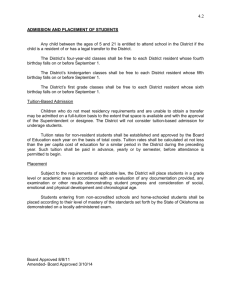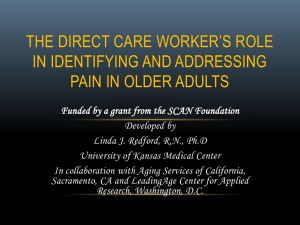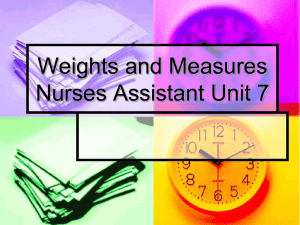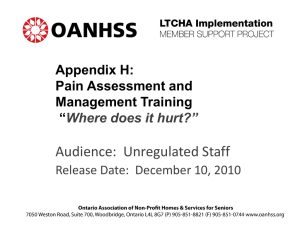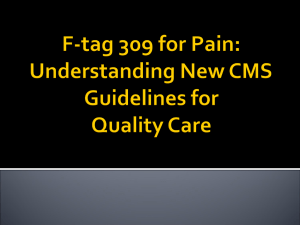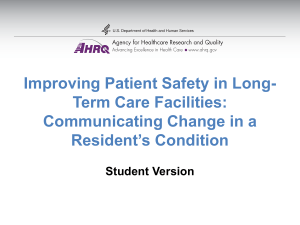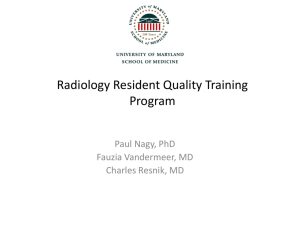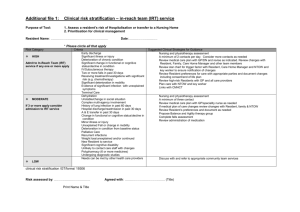managing legal risk - National Association of State Veterans Homes
advertisement
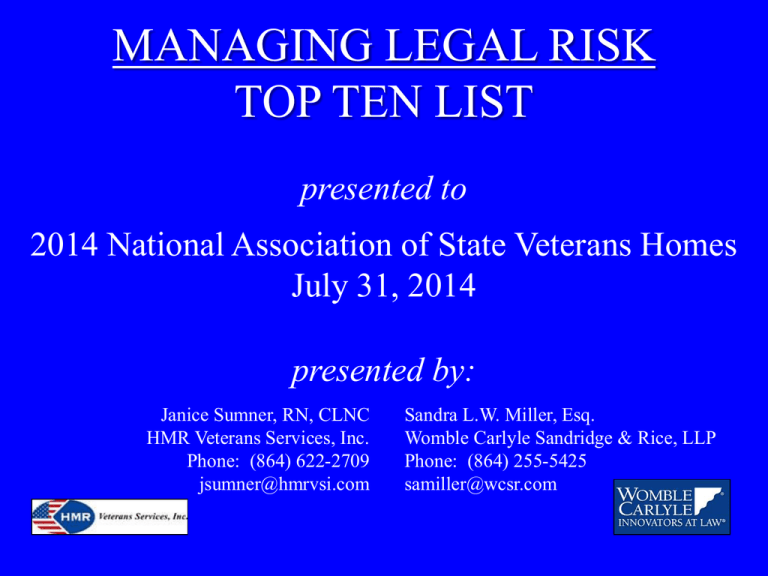
MANAGING LEGAL RISK TOP TEN LIST presented to 2014 National Association of State Veterans Homes July 31, 2014 presented by: Janice Sumner, RN, CLNC HMR Veterans Services, Inc. Phone: (864) 622-2709 jsumner@hmrvsi.com Sandra L.W. Miller, Esq. Womble Carlyle Sandridge & Rice, LLP Phone: (864) 255-5425 samiller@wcsr.com IMPORTANT The materials provided and information presented in this seminar are intended to be informational only and do not constitute legal advice regarding any specific situation. ADMISSION RISKS THE FIRST 72 HOURS DAYS ARE CRITICAL You don’t know the resident. You may be given incomplete information about the resident’s condition. The family may have miscommunicated the resident’s condition or past history of behavior, diet, tendency to wander and previous elopement attempts. ANTICOAGULANTS SPECIAL ATTENTION - SPECIAL RISK Laboratory monitoring is essential. Fall precautions take on additional importance. A small head bump can result in a life threatening subdural hematoma. C-DIFF BEWARE OF THE C-DIFF SCOURGE This infection is becoming more prominent in hospitals and long term care facilities and any episode of diarrhea should involve taking into consideration the possibility of a C-diff infection and include an evaluation of recent antibiotic use. DIABETES SPECIAL MANAGEMENT CHALLENGES Residents who have been on stable regimens prior to admission can develop uncontrolled blood sugars from the change in routine and eating habits that accompanies admission. If the resident has acute problems on admission, assume that to some degree their diabetes management needs to be closely watched and may need adjustment. FALLS CLEARLY DOCUMENT FALL RISK & PRECAUTION Resident’s fall risk must be identified upon admission. Documentation should include specific actions to prevent falls. New incident? → Revise the care plan. Communication with the family. The physician must document and be involved in communications about fall risks and falls. FALLS (Continued) A system must be in place to monitor for implementation of precautions. PHYSICIAN COMMUNICATION COLLABORATION AND FREQUENT COMMUNICATION IS CRITICAL All communications must be documented, along with the physician direction received. It is always better to “over-communicate” than to “under-communicate.” RESIDENT TO RESIDENT ALTERCATIONS FAILURE TO PROTECT A RESIDENT FROM PHYSICAL OR EVEN VERBAL ABUSE BY ANOTHER RESIDENT INFLAMES A JURY AND CREATES SIGNIFICANT RISK IN LITIGATION RESIDENT TO RESIDENT ALTERCATIONS (Continued) Residents who are mobile and confused present increased risk of: (1) physical abuse between residents; and (2) false allegations from residents who are confused and paranoid or who have delusions or hallucinations. Careful placement on the front end is best. Psychiatric consultation is critical. SKIN INTEGRITY THERE IS NO SUBSTITUTE FOR PREVENTION An accurate body audit should be done within the first hour after admission. Accurate admission documentation is critical. Diagnosis must be accurate: Is it arterial, venous stasis, or pressure related? The care plan should include assessment of skin breakdown or abrasions from other equipment (e.g., wander guards). SKIN INTEGRITY (Continued) Is it really a rash or excoriation on the buttocks or is it the first sign of underlying skin breakdown about to erupt into a visible major decubitus ulcer? In post-surgical residents, consider surgical positioning during the initial body audit. What is going on under a cast or brace? Obtain clear orders as to whether any brace or other equipment is to be removed. STANDING ORDERS SYMPTOMATIC STANDING ORDERS SHOULD BE RESIDENT SPECIFIC Treating symptoms without assessment can mask early signs of acute and potentially serious conditions. UNREALISTIC FAMILY EXPECTATIONS UNREALISTIC FAMILY EXPECTATIONS (Continued) DECLINE IS MOST OFTEN INEVITABLE Unrealistic family expectations are commonplace. There is no such thing as too much communication with family members. Communications should be documented including what the family is told and their response. AND NOW, FOR THE BIG FINALE!
